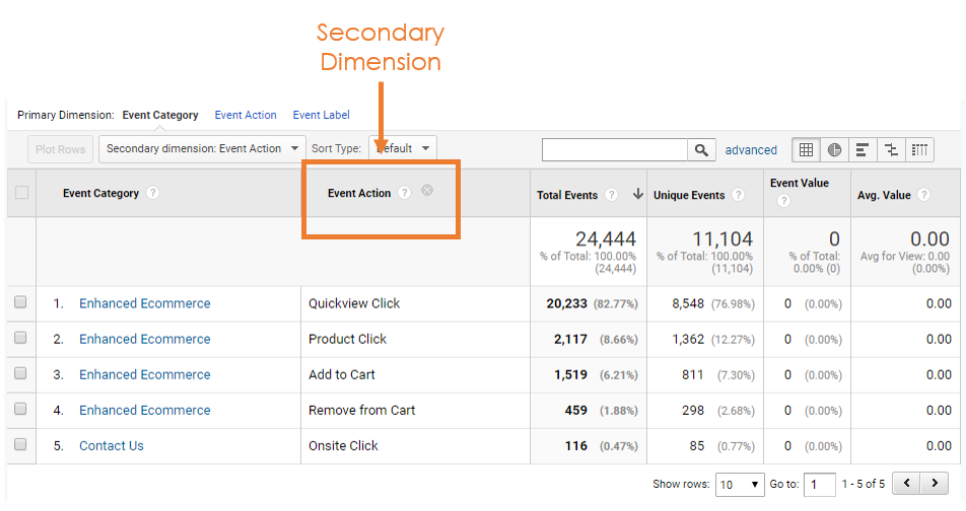Unlock Advanced Insights with Google Analytics Secondary Dimension Devices
Unlock Advanced Insights with Google Analytics Secondary Dimension Devices
Blog Article
Opening the Power of Second Dimension Analytics for Improved Information Insights and Decision-Making
In the realm of data analytics, main measurements usually take the spotlight, but the real deepness of understandings exists within the realm of secondary dimensions. These extra data factors supply a nuanced viewpoint that can illuminate connections and patterns not easily evident initially look. By harnessing the power of secondary measurement analytics, organizations can unveil hidden trends, uncover correlations, and extract much more significant final thoughts from their data. The potential for enhanced decision-making through the usage of these secondary dimensions is vast, promising a much deeper understanding of intricate information collections and leading the method for more informed strategic choices.
Significance of Secondary Measurements
Checking out the significance of second measurements in analytics unveils the surprise layers of information insights critical for notified decision-making in various domain names. Additional measurements offer a deeper understanding of main data by supplying extra context and perspectives. By integrating secondary measurements into analytics, companies can extract extra nuanced and detailed understandings from their datasets.
One key relevance of secondary measurements is their ability to section and categorize primary information, enabling a much more detailed analysis of details subsets within a dataset. This division enables organizations to identify patterns, trends, and outliers that could not appear when taking a look at the information all at once. Second measurements help in uncovering connections and dependences in between various variables, leading to more accurate forecasting and predictive modeling - secondary dimension.
Moreover, second measurements play an essential function in improving information visualization and coverage. By including second measurements to visualizations, such as graphes or charts, experts can create more insightful and interesting depictions of information, assisting in far better interaction of searchings for to stakeholders. Generally, the assimilation of second measurements in analytics contributes in opening the full capacity of data and driving evidence-based decision-making.
Key Benefits of Utilizing Second Measurements
Utilizing additional dimensions in analytics supplies organizations a strategic advantage by augmenting the deepness and granularity of data understandings. By dissecting information using additional dimensions such as time, place, device type, or user demographics, organizations can discover patterns, trends, and connections that may otherwise continue to be covert.
Moreover, the use of second dimensions boosts the context in which primary data is analyzed. It offers an extra comprehensive sight of the relationships between various variables, making it possible for organizations to make educated choices based on a much more all natural understanding of their data. Furthermore, second measurements help with the recognition of outliers, abnormalities, and areas for optimization, ultimately bring about more efficient approaches and enhanced results. By leveraging second measurements in analytics, organizations can harness the full capacity of their information to drive far better decision-making and achieve their company goals.
Advanced Data Analysis Techniques
A deep study advanced data analysis techniques discloses innovative approaches for removing beneficial understandings from intricate datasets. One such strategy is equipment understanding, where formulas are utilized to determine patterns within data, predict outcomes, and make data-driven decisions. This approach permits for the automation of logical design building, allowing the processing of large quantities of information at a quicker pace than traditional methods.
An additional innovative method is predictive analytics, which uses analytical algorithms and device learning strategies to anticipate future outcomes based upon historic data. By analyzing patterns and patterns, companies can prepare for client behavior, market fads, and possible risks, empowering them to make positive decisions.
In addition, message mining and sentiment evaluation are important strategies for drawing out insights from disorganized data look at these guys resources such as social networks comments, client reviews, and study reactions. By assessing text information, organizations can recognize client point of views, determine arising patterns, and boost their products or solutions based upon comments.
Enhancing Decision-Making Via Secondary Measurements

Enhancing decision-making via secondary dimensions allows organizations to make more informed and targeted calculated selections. By segmenting customer information based on secondary measurements like acquiring background or engagement levels, companies can tailor their advertising techniques to certain target market sections, leading to enhanced you could look here conversion rates and client complete satisfaction. Additionally, additional dimensions can assist determine correlations and relationships between various variables, making it possible for useful content companies to make data-driven choices that drive growth and success.
Applying Additional Dimension Analytics
When integrating secondary measurements in analytics, organizations can open much deeper insights that drive strategic decision-making and improve total performance. This requires comprehending the details questions the company seeks to respond to and the information points needed to address them.

Additionally, companies need to leverage progressed analytics devices and technologies to improve the procedure of including secondary dimensions. These tools can automate information handling, evaluation, and visualization, allowing organizations to concentrate on analyzing understandings instead of hands-on data adjustment.
Verdict
In conclusion, secondary measurement analytics play a critical duty in boosting information insights and decision-making processes. By utilizing innovative information analysis techniques and implementing second measurements successfully, organizations can unlock the power of their information to drive calculated company decisions.
In the world of information analytics, primary measurements usually take the limelight, but the real deepness of insights exists within the world of secondary measurements.Making use of additional measurements in analytics uses organizations a strategic benefit by increasing the depth and granularity of information insights. By leveraging second dimensions in analytics, companies can harness the full potential of their data to drive much better decision-making and achieve their service purposes.
Executing information validation processes and regular audits can help keep data top quality and reliability.
By making use of advanced data analysis methods and applying second dimensions effectively, companies can unlock the power of their information to drive strategic organization decisions.
Report this page